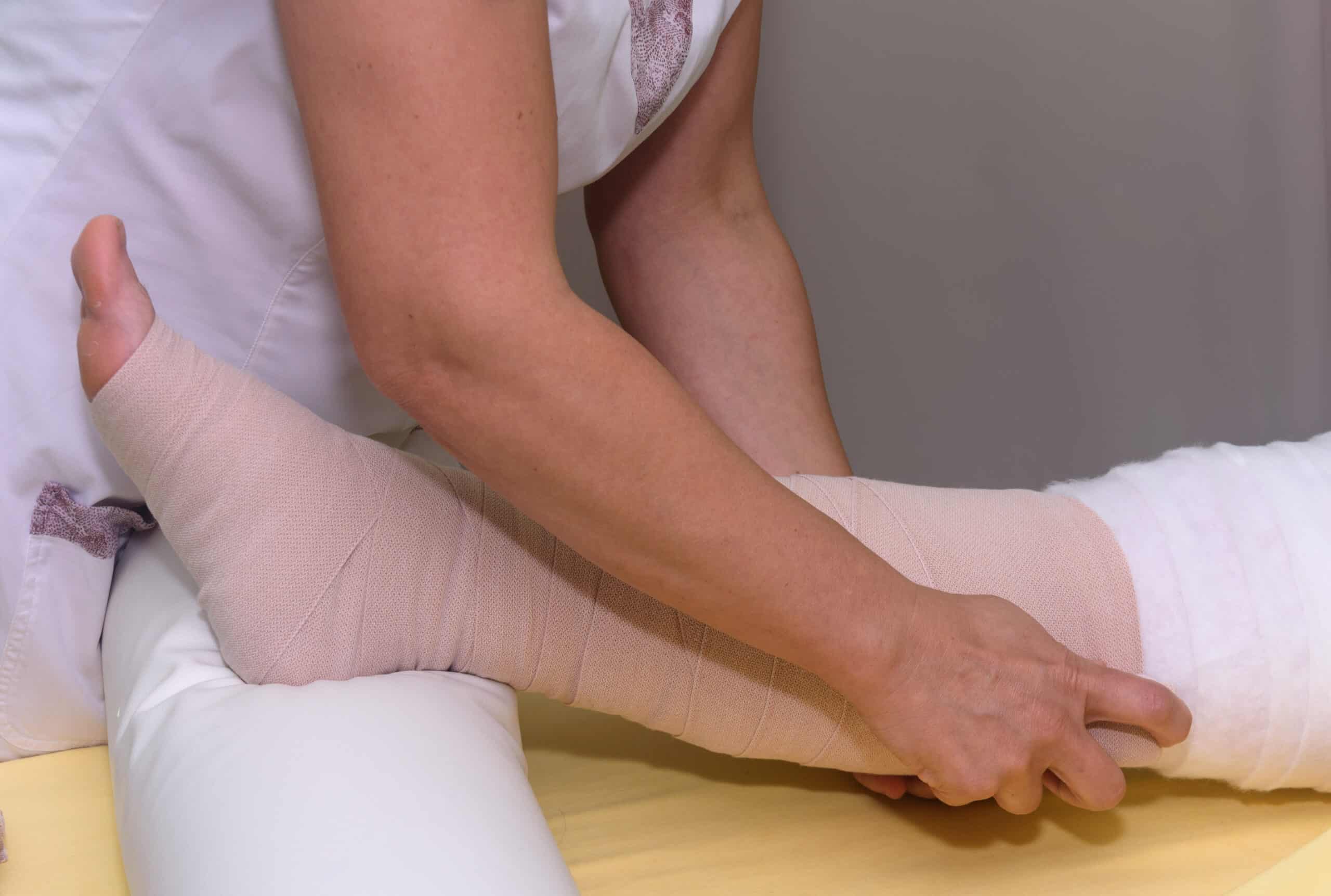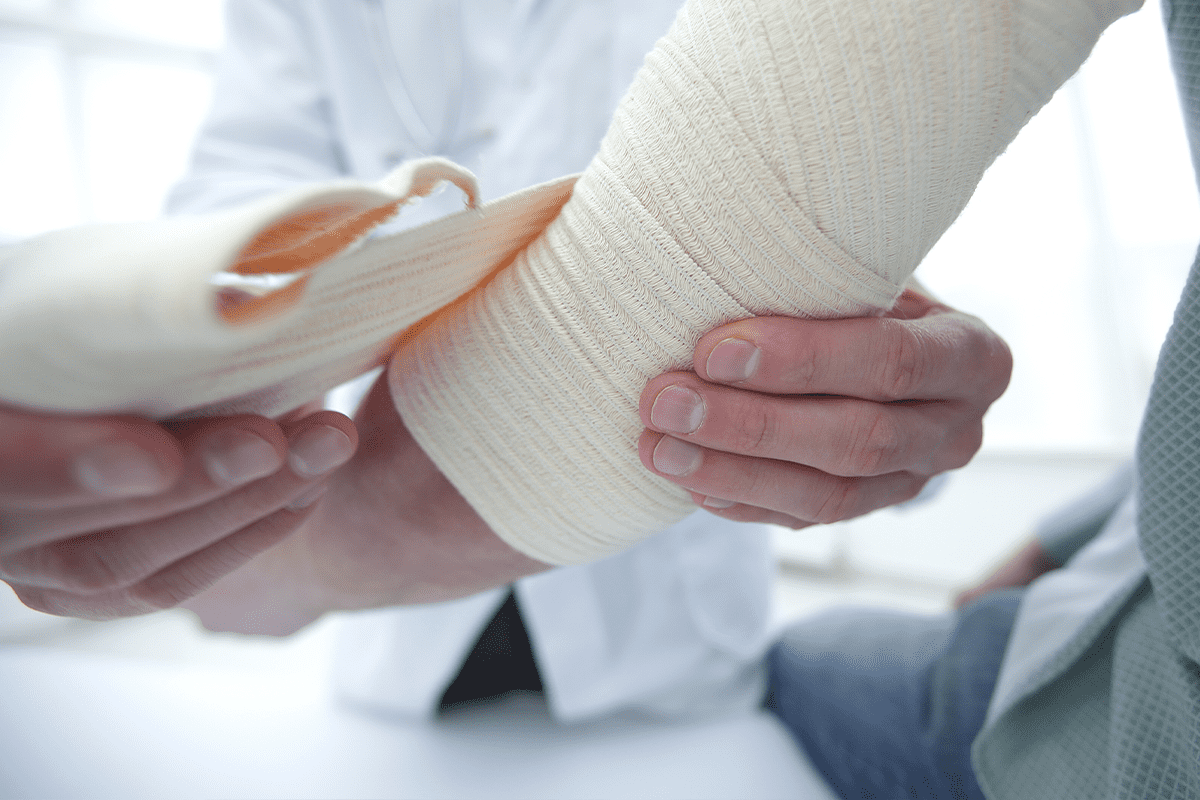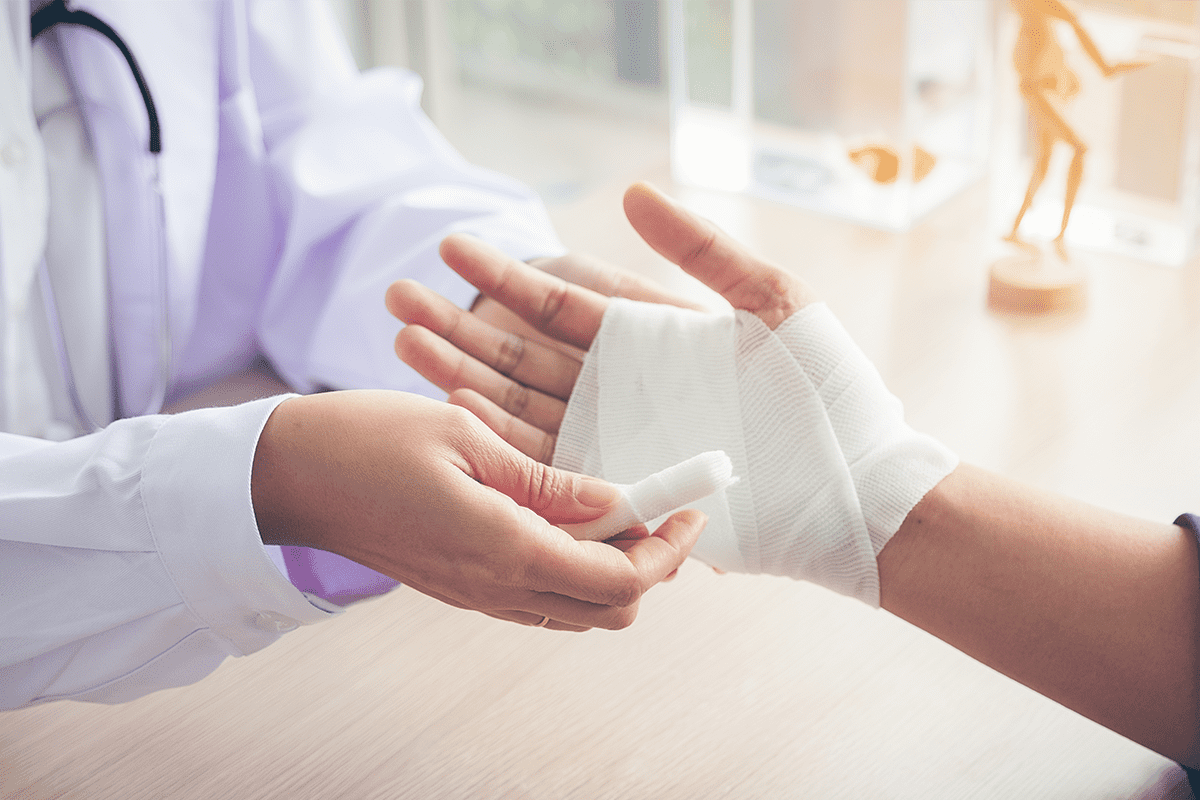- What is compression therapy for wound care?
- Why would I need compression therapy?
- What are the benefits of compression therapy?
- Are there different types of compression therapy?
- Does compression therapy hurt?
Doctors have used compression therapy to speed healing in long-term wound care for decades. By helping to contain and stimulate healing processes around injured tissues, compression therapy has been proven to improve the speed of recovery while lessening the wound’s chances of recurring. Over six months, 50 to 60% of all patients with long-term wounds heal successfully with compression therapy.
In fact, compression therapy is even recommended as one of the most effective forms of wound care for certain injuries, offering a non-invasive treatment option that can assist with healing without requiring surgery.
In this article, we’ll explore the benefits of compression therapy, how it works, and why doctors recommend it as one of the first courses of treatment for certain injuries.
What Is Compression Therapy for Wound Care?
 Compression therapy is a medical treatment for wound care that involves the application of pressure to an affected area. Adding pressure on and around the wound helps prevent fluid buildup and reduce swelling, allowing the body’s circulatory system to circulate blood to promote healing. Doctors typically use bandaging or other wound compression products to apply pressure to an open wound.
Compression therapy is a medical treatment for wound care that involves the application of pressure to an affected area. Adding pressure on and around the wound helps prevent fluid buildup and reduce swelling, allowing the body’s circulatory system to circulate blood to promote healing. Doctors typically use bandaging or other wound compression products to apply pressure to an open wound.
Before compression therapy, your doctor will first assess the wound to determine the appropriate level of compression treatment. The doctor will then apply the compression bandages, stockings, or another medical device to the affected area using specific techniques to ensure proper pressure distribution.
During treatment, your doctor will carefully observe your response, including any changes in pain, swelling, or other symptoms. The compression garment or procedure can be adjusted for maximum benefit.
If you’re undergoing this treatment, you may need to wear a compression garment for an extended time. Your clinician will provide instructions on caring for the compression garment and how often it should be changed by your doctor.
Why Would I Need Compression Therapy?
 Compression therapy is a standard approach to healing stubborn venous or stasis ulcers. These wounds typically appear on the legs as long-term chronic sores that heal slowly over months or even years. Venous leg ulcers stem from poor circulation and are difficult to treat. One study called venous leg ulcers, “a major clinical challenge.” Applying compression to these wounds helps reduce swelling, increase circulation, and heal ulcers.
Compression therapy is a standard approach to healing stubborn venous or stasis ulcers. These wounds typically appear on the legs as long-term chronic sores that heal slowly over months or even years. Venous leg ulcers stem from poor circulation and are difficult to treat. One study called venous leg ulcers, “a major clinical challenge.” Applying compression to these wounds helps reduce swelling, increase circulation, and heal ulcers.
Compression therapy isn’t suitable for all types of wounds. However, this approach can also be used to treat:
- Chronic Venous Insufficiency (CVI) (a malfunction in the valves that move blood back to the heart)
- Lymphedema (swelling in the arms and legs)
- Arterial Ulcers (wounds caused by poor circulation to the arteries)
- Diabetic Foot Ulcers
- Deep vein thrombosis (DVT) (blood clots)
- Pressure Ulcers
- Orthostatic Hypotension (restricted circulation to the heart)
Compression therapy, including the use of compression stockings, should only be fitted by a trained healthcare professional. The goal is to apply the appropriate amount of pressure for each patient.
What Are the Benefits of Compression Therapy?
 Compression therapy has several benefits for wound care, including:
Compression therapy has several benefits for wound care, including:
- Improves blood flow to the affected area to promote healing
- Reduces swelling and improves circulation
- Prevents infection by promoting healing that keeps bacteria from entering the wound
- Improves patient mobility by reducing pain and swelling
- Improves patient quality of life
Compression therapy offers patients some added benefits for reducing pain, itching, and fatigue while stimulating muscle recovery. These benefits allow you to recover some range of motion and flexibility in the limb. Ultimately, as the limb heals and you begin to move more freely, compression therapy reduces the risk of infection as the area continues to heal.
Are There Different Types of Compression Therapies?
There are several different types of compression therapies, including:
- Multi-layer compression bandaging
- Graduated compression stockings
- Intermittent pneumatic compression
Multi-Layer Compression Bandaging
In multi-layer compression bandaging, the doctor uses several layers of bandages with varying compression levels across the wound.
The bandages are applied in a specific order to promote advanced healing:
- A non-adherent dressing to protect the wound
- A padding layer to cushion the area
- Several layers of compression bandage
Graduated Compression Stockings
Graduated compression stockings are medical-grade hosiery that provides varying levels of pressure to different parts of the leg.
Typically, the compression is highest at the ankle and decreases as the stocking rises up the leg. In this way, the compression stocking pushes blood flow up toward the heart, preventing it from pooling in the feet and lower legs.
Compression stockings are also used after surgery to help prevent blood clots or for patients with varicose veins.
Intermittent Pneumatic Compression
Intermittent pneumatic compression uses a wearable medical device to apply periodic pressure to the wound area.
The device is an inflatable garment, such as a boot or sleeve, that inflates and deflates at regular intervals. If you’ve had your blood pressure taken, the intermittent pneumatic compression device works similarly.
The inflation process typically lasts a few seconds, then deflates. This inflation and deflation are repeated throughout the treatment session.
All of these treatments should only be used under the guidance of your trained healthcare professional.
Just like a compression stocking, the intermittent pneumatic compression device keeps the underlying blood moving to stimulate healing and reduce the chance of a dangerous blood clot.
Does Compression Therapy Hurt?
Compression therapy is generally not supposed to be painful. You may experience some tightness or discomfort when the compression bandage or garment is applied. This discomfort is because the compression helps restrict blood flow and reduces swelling, so you may feel a tightness or pressure in the area.
However, you should not experience significant pain or discomfort during compression therapy. Severe pain, numbness, tingling, or other symptoms should be reported to your doctor immediately.
The improper use of a compression garment can cause complications such as skin irritation. It’s important to carefully follow your doctor’s instructions during this and any other treatment for a long-term chronic wound condition.
Freedom Health & Wellness (formerly Rapha Wound Care) is committed to helping you heal. Contact us to find out more about our practice and how we can help you and your loved ones.




